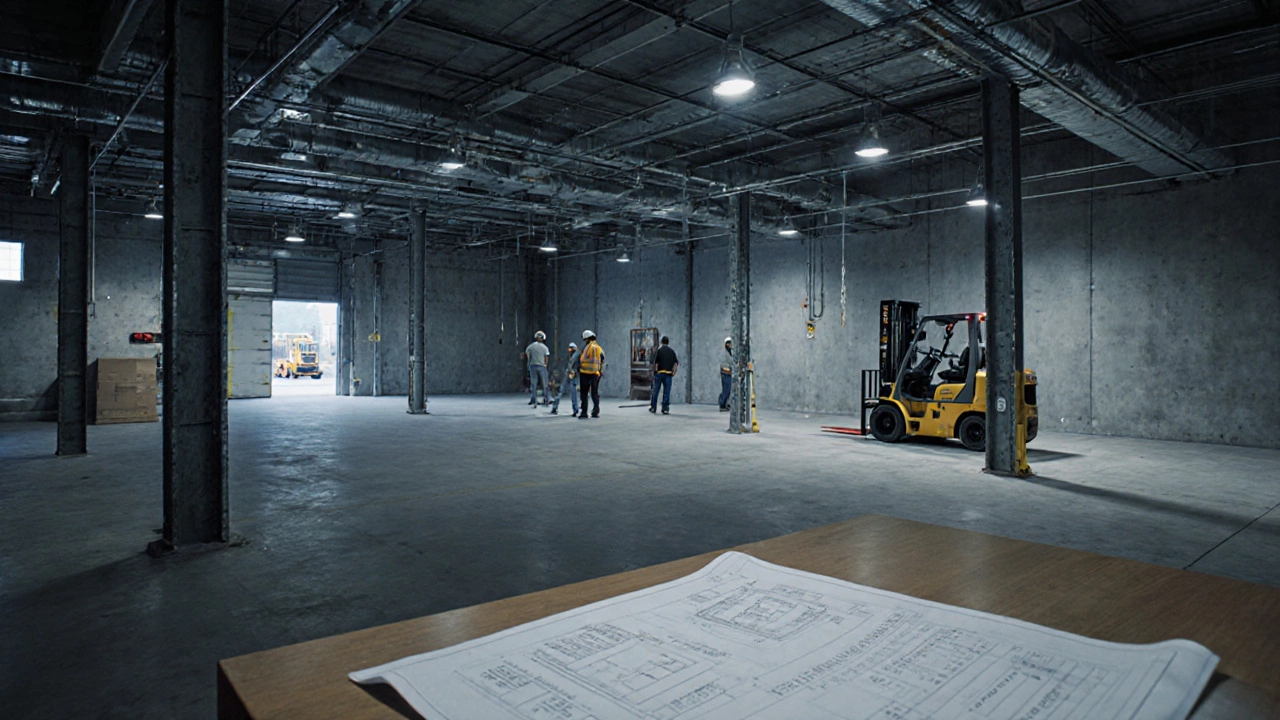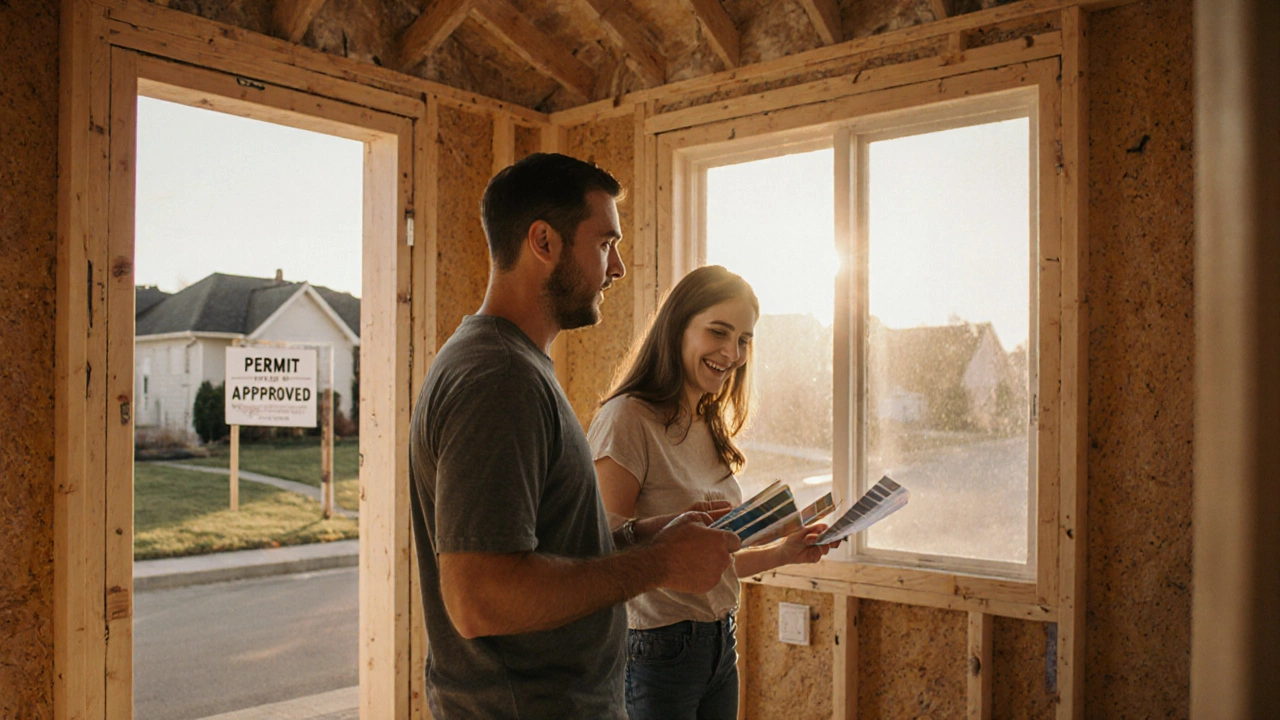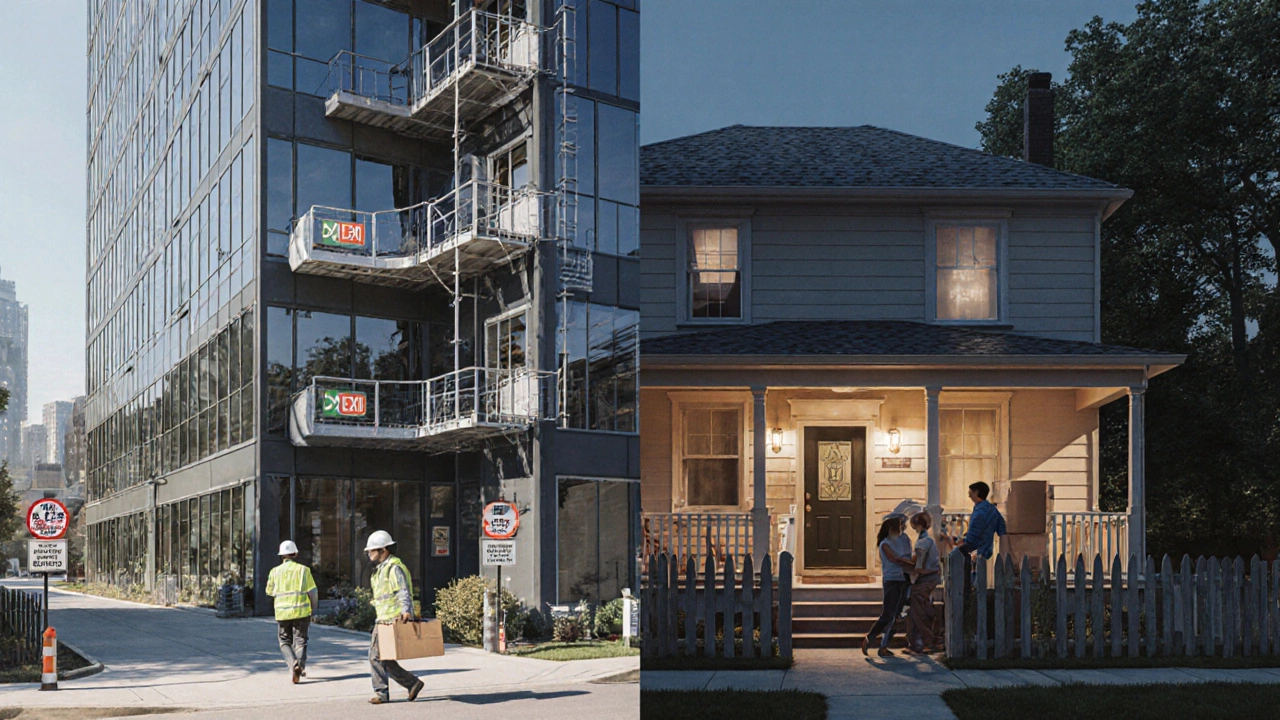Construction Project Estimator
Project Details
Your Project Estimate
Key Considerations
When you’re planning a new building, the first big question isn’t about materials or colors-it’s about commercial or residential. These aren’t just two types of buildings. They’re two entirely different worlds with separate rules, costs, timelines, and risks. Choosing the wrong path can cost you months, tens of thousands of dollars, or even a failed project. So which is better? It depends on what you’re trying to build-and why.
Commercial Construction Is Built for Business, Not Comfort
Commercial buildings exist to make money, not to feel like home. Think offices, retail stores, warehouses, hotels, or medical clinics. They’re designed for high foot traffic, heavy equipment, long operating hours, and strict safety codes. The walls aren’t just drywall-they’re fire-rated. The HVAC isn’t just for comfort-it’s engineered to handle 50 people in a 1,000-square-foot space without breaking down.
Commercial projects follow the International Building Code (IBC), which demands structural strength, accessibility compliance (ADA), and fire safety systems most homes never need. A single commercial building might require sprinklers, emergency lighting, multiple exits, and elevator access. All of that adds up. On average, commercial construction costs $200-$350 per square foot, depending on location and complexity. A 10,000-square-foot retail space? That’s $2 million to $3.5 million before land.
And the timeline? Don’t expect to move in in six months. A typical commercial build takes 12-24 months from permit to opening. Why? Because every step requires inspections, approvals from multiple agencies, and coordination with tenants or lease agreements. One delayed permit can push everything back.
Residential Construction Is Personal-And Simpler
Residential construction is about people living in the space. Single-family homes, duplexes, apartments-these are built to be lived in, not operated. The building code here is the International Residential Code (IRC), which is simpler, more forgiving, and focused on safety for families, not crowds.
Residential projects don’t need elevators, fire sprinklers (unless you’re building a multi-story condo in a high-risk zone), or ADA-compliant ramps for every entrance. A typical 2,500-square-foot home costs $150-$250 per square foot to build. That’s $375,000 to $625,000 total-still a big investment, but far less than commercial.
Timelines are shorter too. A custom home usually takes 6-12 months. Permitting is faster because you’re dealing with one local building department, not multiple state or federal agencies. There’s less red tape. You can change the layout mid-construction without needing a new engineering review. That flexibility is huge for homeowners who want to tweak the kitchen layout or add a closet.
Who Controls the Project?
In commercial construction, you’re rarely the only voice. Tenants, investors, property managers, and corporate stakeholders all have opinions. A restaurant owner might demand a specific exhaust hood capacity. A retail chain will require branded signage standards. A hospital needs specialized ventilation for sterile zones. You’re not building for yourself-you’re building to someone else’s exact specs.
Residential projects? It’s usually just you, your partner, and your contractor. You pick the countertops, the light fixtures, the paint colors. If you want a sunroom, you don’t need approval from a board of directors. That level of control is one of the biggest appeals of residential building.
Financing Is a Whole Different Game
Getting a loan for a commercial building is harder. Banks see commercial properties as riskier. They want a 30-40% down payment, proof of business revenue, and a solid business plan. They’ll look at your credit score, your cash flow, your lease agreements. Even if you’re a contractor with a great track record, you still need a tenant lined up before they’ll approve the loan.
Residential loans are much simpler. A 20% down payment is standard. Your credit score matters, but your income and debt-to-income ratio are the main factors. You don’t need to show a business plan to buy a house. That’s why more people build homes than commercial buildings-it’s easier to get money for.

Resale Value and ROI Are Not the Same
Commercial properties can bring higher returns, but they’re also more volatile. A well-leased office building in a growing city can earn 8-12% annual return. But if the economy slows, tenants leave, and vacancy hits 20%, your cash flow disappears overnight. Commercial real estate is tied to business cycles.
Residential properties are steadier. Even in a downturn, people still need a place to live. A house in a good neighborhood might only return 5-7% annually, but it’s less likely to sit empty for months. Renters may leave, but they’ll come back. Buyers may wait, but they’ll still show up. That stability makes residential a safer long-term bet for most investors.
Who Can Build What?
Not every contractor can handle both. Commercial construction requires specialized licenses, insurance, and experience with large-scale projects. A firm that builds homes might not have the bonding capacity to take on a $5 million warehouse. Commercial projects often require performance bonds, which are expensive and hard to get without a proven track record.
Residential contractors usually don’t need those bonds. They work with smaller crews, local suppliers, and simpler logistics. That’s why you’ll find hundreds of local home builders but only a handful of firms that regularly do commercial builds in most cities.
Which Is Better? It Depends on Your Goal
If you’re looking to make money through rentals or business operations, commercial construction offers higher potential returns-but also higher risk, higher cost, and more complexity. It’s not for beginners. You need capital, patience, and a deep understanding of zoning, leasing, and tenant management.
If you’re building a home for yourself, your family, or as a long-term rental with lower stress, residential is the clear winner. It’s more predictable, easier to finance, and simpler to manage. You get more control, faster results, and fewer headaches.
There’s no universal “better.” The right choice depends on your goals, resources, and tolerance for risk. If you want speed, simplicity, and personalization-go residential. If you’re ready to run a real estate business and can handle the pressure-commercial might be your path.

Common Mistakes People Make
Many people think they can save money by using a residential builder for a small commercial project-like a daycare or boutique office. That’s a trap. Residential builders don’t know the commercial codes. You’ll get fined, delayed, or forced to tear out work that doesn’t meet fire or ADA standards. One client in Atlanta spent $80,000 fixing code violations after hiring a home builder for a 2,000-square-foot yoga studio.
Others assume commercial is always more expensive. Not true. A simple, no-frills warehouse in a rural area might cost less per square foot than a luxury custom home in downtown Austin. Location and design matter more than category.
The biggest mistake? Not talking to a commercial real estate advisor before you start. Many investors lose money because they focus on the building, not the market. A beautiful office building means nothing if no one wants to rent it.
What You Should Do Next
Ask yourself these questions:
- Are you building to live in, or to generate income?
- Do you have access to $500,000+ in capital, or are you working with a standard mortgage?
- Are you prepared to manage tenants, leases, and maintenance for years?
- Do you understand local zoning laws for commercial use?
- Have you talked to a commercial lender or real estate broker?
If you answered mostly “yes” to the first three, commercial might be worth exploring. If you answered “no” to most of them, stick with residential. There’s no shame in choosing the simpler, safer route.
Final Thought
Commercial construction isn’t better. Residential isn’t better. They’re just different tools for different jobs. One builds wealth through scale and income. The other builds stability through personal use and long-term value. Pick the one that matches your life, not the one that sounds more impressive.
Can I convert a residential building into a commercial one?
Yes, but it’s not simple. You’ll need to rezone the property, upgrade the structure to meet commercial building codes (fire safety, accessibility, HVAC, electrical), and get permits. Costs can easily hit 30-50% of the building’s value. Many older homes can’t be converted cost-effectively. Always check with your local zoning office before buying.
Which takes longer to build: commercial or residential?
Commercial projects typically take 12-24 months. Residential builds take 6-12 months. The difference comes from permitting, inspections, and coordination with multiple stakeholders. A single commercial building might need 15+ inspections from different agencies. A house usually needs 3-5.
Is commercial construction more profitable than residential?
It can be, but it’s riskier. A well-leased commercial property can return 8-12% annually. A residential rental might return 5-7%. But commercial properties can sit empty for months, and tenant turnover is costly. Residential is steadier. Most investors prefer residential for its lower risk and easier management.
Can I use the same contractor for both types of projects?
Most residential contractors can’t legally or safely handle commercial work. Commercial projects require special licenses, insurance, and bonding. A home builder might not have the equipment or experience for large-scale concrete pours, heavy crane work, or commercial HVAC systems. Always verify a contractor’s credentials before hiring.
What’s the biggest hidden cost in commercial construction?
It’s not materials or labor. It’s delays. Permits, inspections, and tenant coordination can push timelines back by months. Every delay means lost rent, higher financing costs, and penalties. Many commercial projects go over budget not because of surprises, but because of waiting. Plan for a 20% time buffer.
